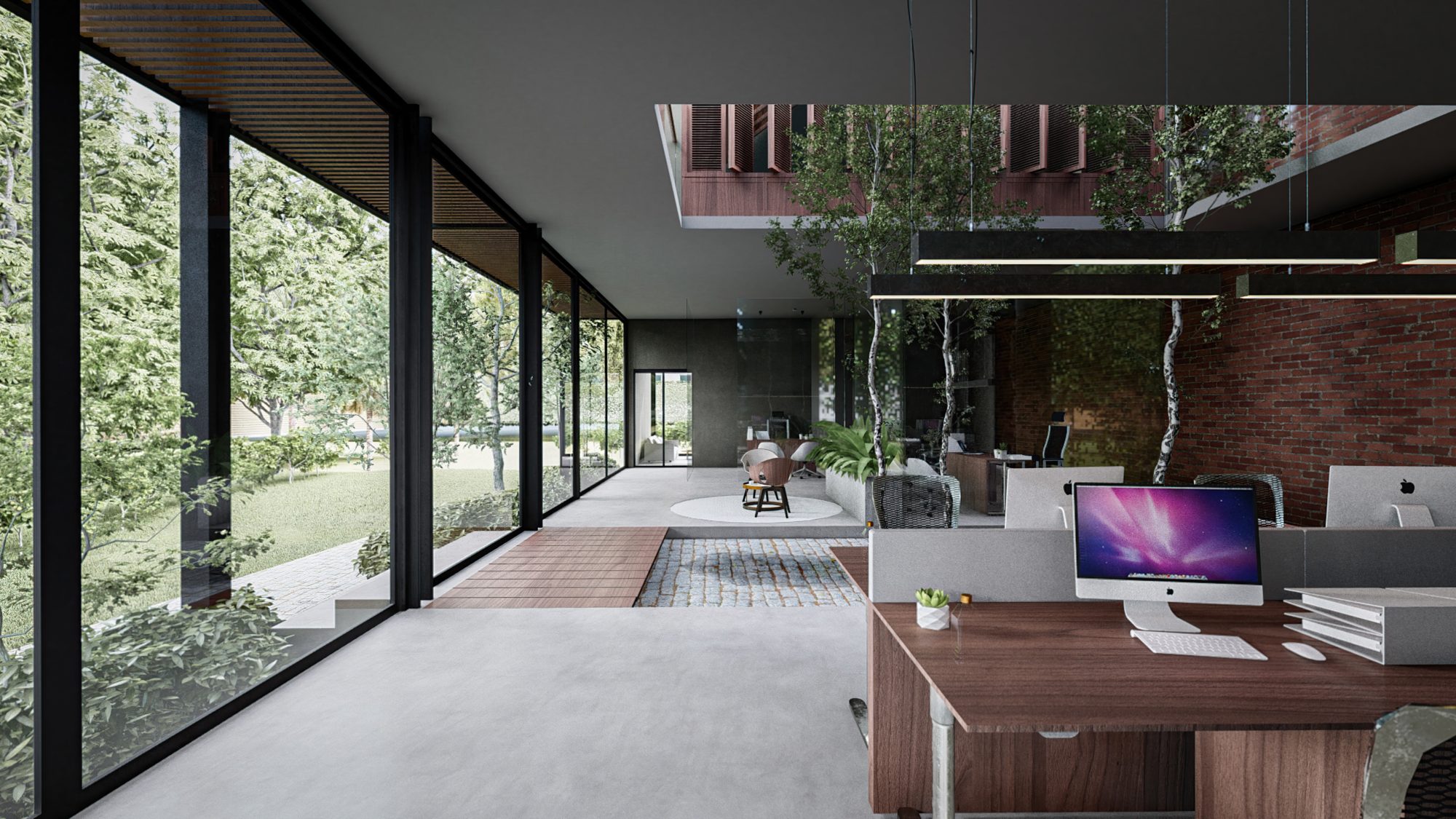
The Biophilia Hypothesis
Biophilic design is based on the biophilia hypothesis.
According to Wikipedia :
“The biophilia hypothesis (also called BET) suggests that humans possess an innate tendency to seek connections with nature and other forms of life.”
In other words, we, as humans, are automatically drawn to and uplifted by nature. The term was first coined by social psychologist and psychoanalyst Eric Fromm who defined it as “loving life.” It was later popularized by a biologist named Edward Wilson, who wrote a book called Biophilia about his own response to nature
Some take biophilia a step further, saying it has healing powers. Several 20th-century scientists have studied the healing power of connecting with nature. For example, in 1984, healthcare design expert Roger Ulrich compared the recovery rates of patients with views of nature to those without that view. Based on personal experience with long-term illness as a child, he suspected that viewing nature helped people heal. The results proved the theory valid, with nature-viewing patients recovering 10% faster than the others without that view.
Over recent decades, architects, healthcare designers, doctors, and psychologists have further studied, and better explained the benefits of biophilic design. Over the last 30 years or so, we’ve seen steady growth in understanding the intersections of neuroscience and architecture. In a 1984 book, Biophilia, written by E.O. Wilson, the author proposes that there’s a fundamental genetic basis for humanity’s positive response to the natural world.
What is Biophilic Design?
Design following the biophilia hypothesis brings nature into interior spaces to permit occupants to connect and be comforted and calmed in its presence. In 2004, architect Stephen Kellert identified more than 70 different mechanisms for engaging a biophilic experience. Whether it’s a stone fireplace, natural wood, house plants, or a picture window to the sea, architects and interior designers use nature’s beauty in their concepts more often today than ever before.
Even green building standards have begun to incorporate biophilia, predominantly for its contribution to indoor environmental quality. Lush green plants, providing beauty and filtering the air to replenish oxygen, naturally fulfill both biophilic and green ideals.
Biophilic design isn’t new and can be seen as far back as The Hanging Gardens of Babylon. One of the Seven Wonders of the Ancient World, the gardens were a gift from King Nebuchadnezzar II to his wife, who missed the green valleys of her homeland. Modern examples include hotels, major metropolitan airports, office buildings, and even museums.
Hotels
In modern hotels, exterior walls showcase lush plant life, and common interior spaces feature reclaimed, upcycled natural materials to add warmth and plants to connect people to the natural world.
Hotels in the state of New York have firmly connected interior spaces to the natural world. Westin Buffalo, for example, used indoor greenery, lots of natural building materials, and outdoor lighting to create calming lounges and other public spaces. They also have lodge-like guest rooms using lots of natural wood on walls and for furniture. Hudson Hotel, in the center of Manhattan, has a plant-covered skylight over the entire wood-floored front lobby and even an indoor park in the elevated lounge area for guests to enjoy.
Airports
Traveling in todays world can be extremely stressful and airport architects and designers have embraced biophilic design to combat it. In Singapore, the Changi Airport includes an indoor waterfall, the tallest indoor waterfall in the world. It has a five-story greenhouse which brings in tons of natural light. Between water sounds and plant purified air, travelers love this airport.
The designers of Honolulu’s Daniel K Inouye International utilized skylights for natural light, lateral planted walls, water features, and even piped-in nature sounds to keep travelers feeling good while they wait for flights.
Office Buildings
Office buildings use biophilic design to provide the most productive spaces for employees.
The Ljubljana Chamber of Commerce and Industry in Slovenia features a glass-enclosed garden combined with panoramic city views. The adaptable space serves as meeting and social function venues and is a favorite space for occupants.
In Seattle, an Amazon building called “The Spheres,” has a round glass dome full of 40,000 plants from around the world, connecting employees and visitors to natural beauty within a very urban setting. The dome brings in lots of natural light, too.
The McCann Erickson offices in New York made some simple, inexpensive adjustments to their space to increase their employees’ exposure to the natural world. They placed desks strategically to maximize the number of people with window views, for example. They also incorporated raw materials and textures into the office decor.
Museums
Montreal’s science museum, called the Biodome, combines modernism with biophilic design. Originally built as a velodrome for the 1976 Olympic track cycling events, the building desperately needed a redesign which it got in 2014 after holding a design competition.
Starting with the existing structure, architects transformed and repurposed it using biophilic design. The soaring ceilings and skylights provide natural light, which promotes interesting shadow play. The science museum also contains multiple whole ecosystems of plants, fish, birds, and other animals. Finally, there’s a translucent wall wrapped around each of the five ecosystems to protect the plants and animals and guide visitors through the exhibits.
Many museums throughout the world have endeavored to increase their buildings’ sustainability. Many, including the Smithsonian in Washington, D.C., have added more natural light and plants. So green or sustainable building refits often meld with biophilic design.
Today’s architects, designers, and builders have a renewed interest in increasing occupants’ connectivity to the natural environment through either direct or indirect use of nature within a space. People handle a fast-paced office environment or stressful travel conditions more easily when they feel connected to the surrounding environment. In addition to being a more positive indoor experience for humans, many biophilia design features help save the earth by plants filtering the air and with sunlight cutting energy costs.
Want to know more about how MDC can help? Drop us a line!

